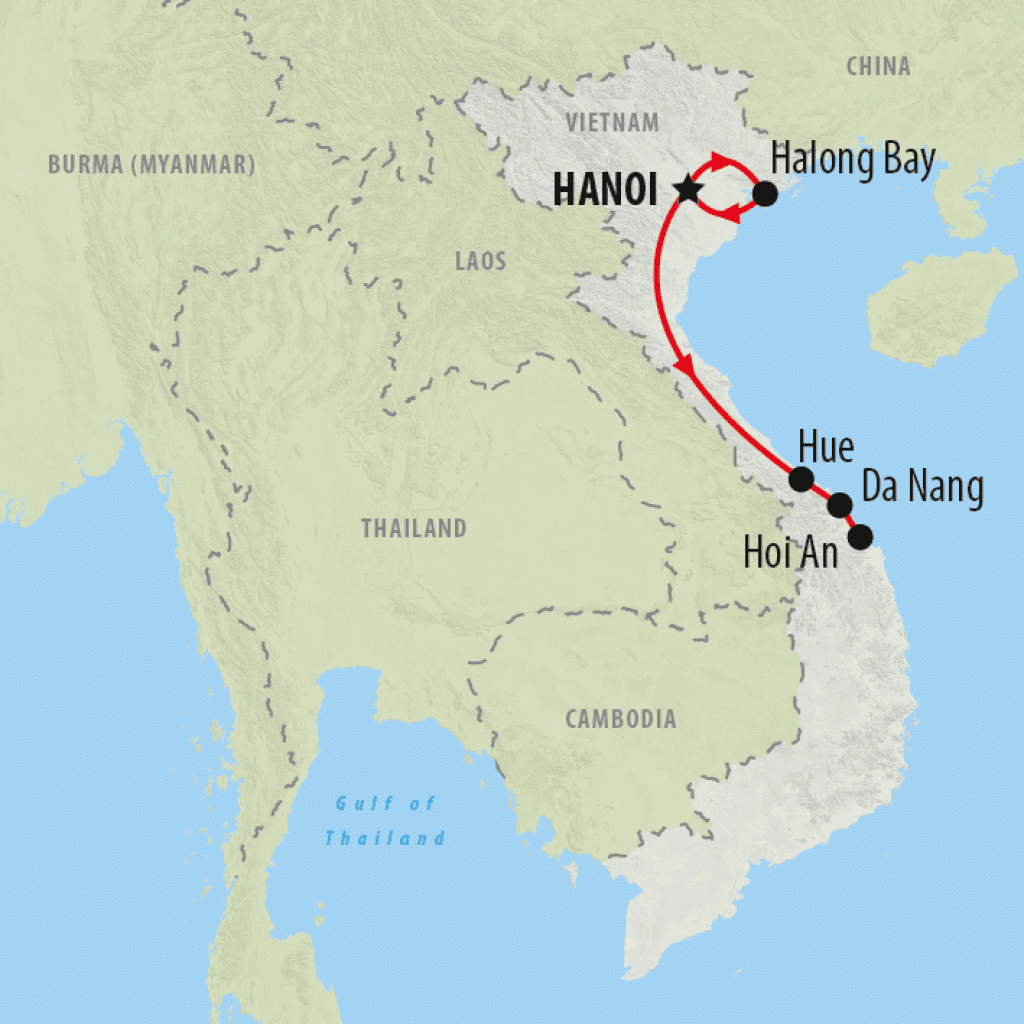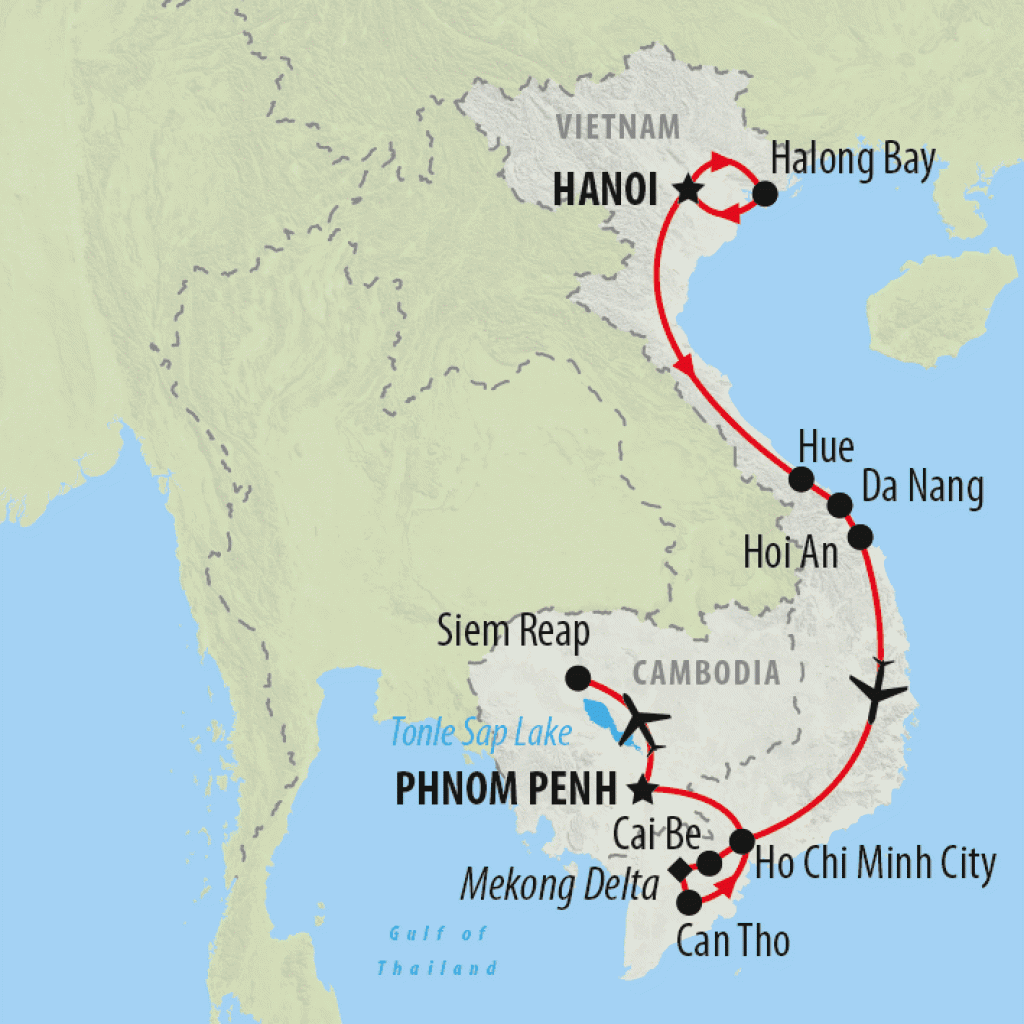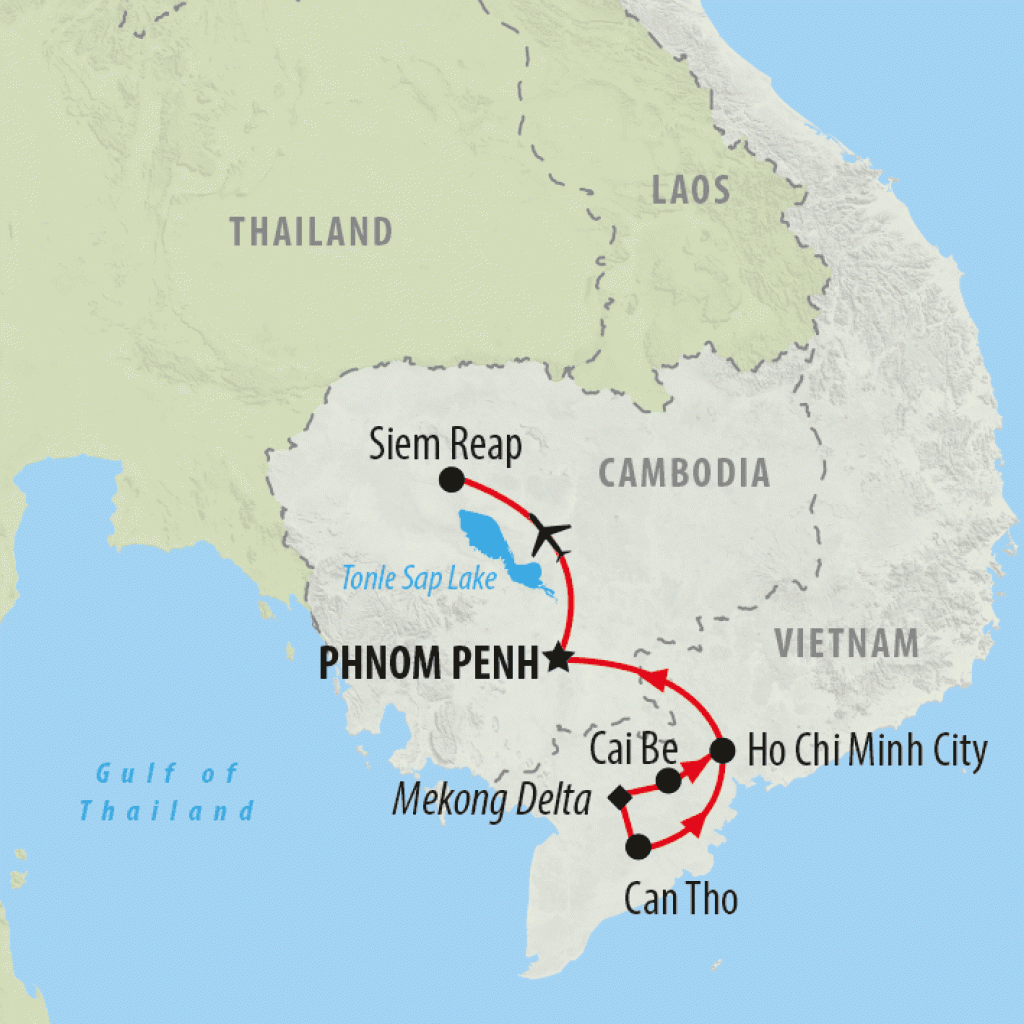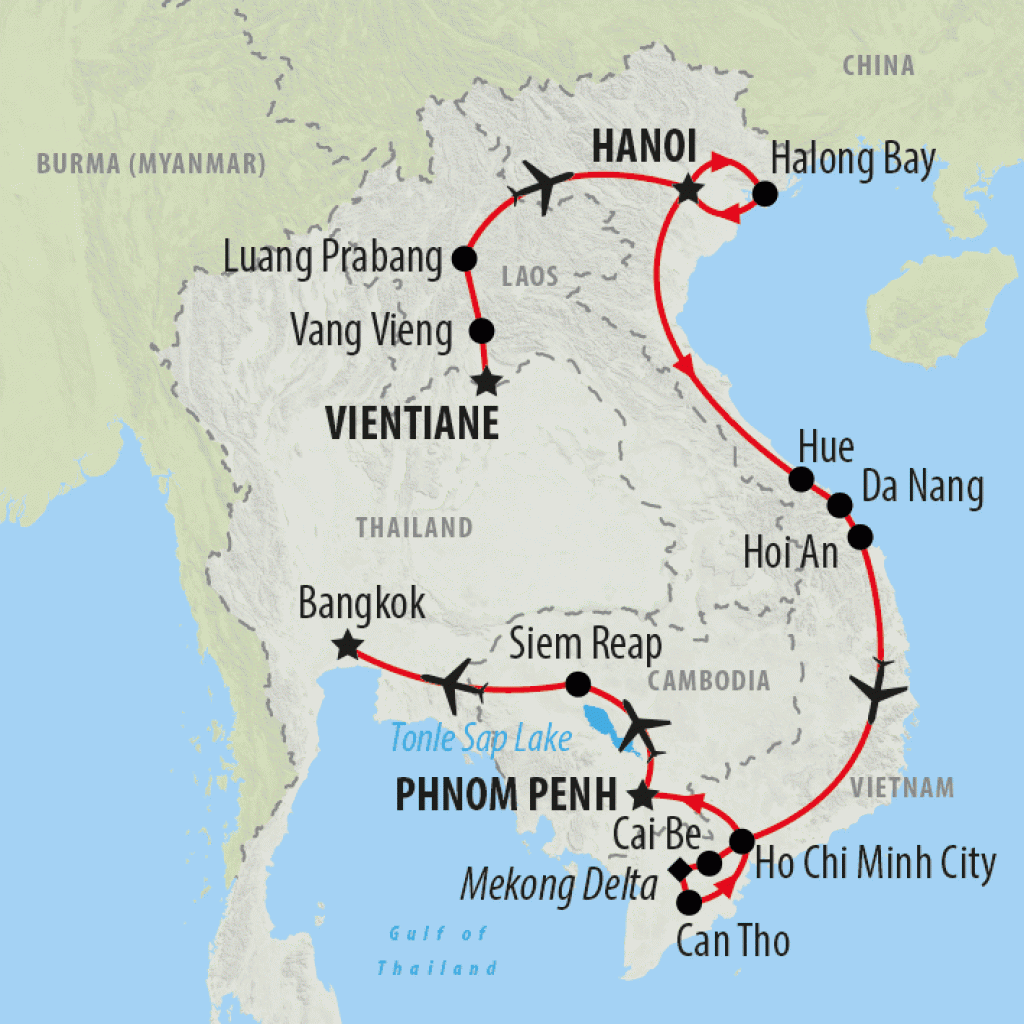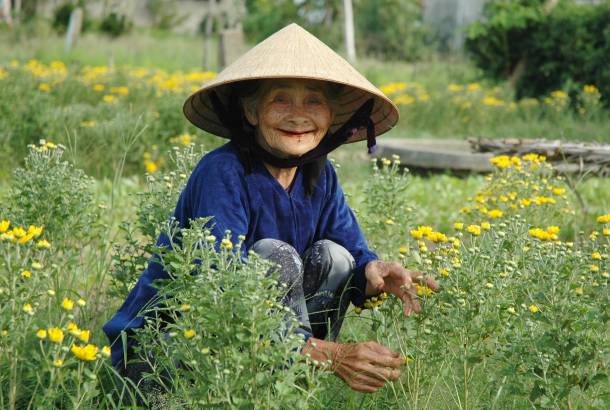
Are you wondering what preparations you need to make for your visit to Vietnam? Want to get the lowdown on tipping and bargaining? Here we've put together loads of useful tips to help you plan your Vietnam adventure and make sure it runs smoothly.
What vaccinations do I need for Vietnam?
As a guide Diphtheria, Hepatitis A, Typhoid and Tetanus are strongly recommended. You should seek medical advice before travelling to Vietnam from your local health practitioner and ensure that you receive all of the appropriate vaccinations.
Do I need anti-malaria tablets for Vietnam?
Areas with malaria are largely confined to the rural regions that border Laos and Cambodia, the central highlands and provinces south of Ho Chi Minh City. In urban centers such as Hanoi and Ho Chi Minh City, the Mekong Delta, and the coastal plains there is a low risk of malaria. Anti-malaria medication may be recommended to those visiting risk areas off the beaten track but for those sticking to the well-trodden path between Hanoi and Ho Chi Minh City along the coast, it's worth considering whether the side effects of anti-malaria drugs are worth the small risk of contracting the disease. Please consult your doctor or travel health professional for advice.
As with any destination where malaria is present, take precautions against mosquito bites by wearing light colored clothes that cover your arms and legs and apply a DEET-based insect repellent. For more information on the malaria risk in Vietnam visit the NHS Fit for Travel website or the CDC Travelers Health page.
Is it safe to drink tap water in Vietnam?
No, it is not considered safe as tap water in Vietnam is often contaminated. Bottled water is cheap and readily available from shops, hotels and restaurants across the country. Always check that the seal on the bottle cap is intact.
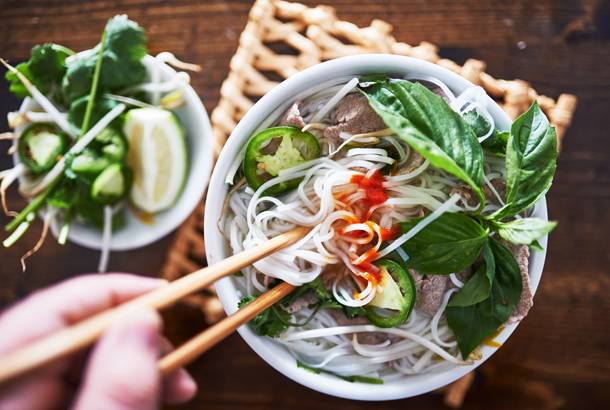
What's the food like in Vietnam?
Vietnamese cuisine is very tasty and diverse. While the staple food is rice and noodles served with vegetables and meat, cuisine varies geographically between the north and south. The north is renowned for its meat and seafood stir-fries and delicious noodle soups (heavy on the soy sauce), while the south is influenced by Thai, Chinese and Cambodian cuisine with more colorful, spicy and sugary dishes. Blessed with over 3,000km of coastline, seafood is the region’s specialty.
Vietnamese classics include pho – a large bowl of rice noodles flavored with sliced beef or chicken in a fragrant broth (served at breakfast but delicious at anytime of the day) - spring rolls, and shrimp paste grilled on sugar cane.
The most popular draft beer among the Vietnamese is Saigon Do (Red Saigon). 333, pronounced ‘ba-ba-ba’, is another local brand but possibly the best is Bia Saigon found in a green bottle and Biere Larue that is also available for export. Vietnam adopted a tradition of viticulture from the French colonial times. Dalat is the center of the winelands, and you can get very good red and white wine for about USD $4 a bottle. Elsewhere you’ll probably be served international wines (often Australian) at international prices.
Coconut water and sugar cane juice is a favorite in the hot southern part of the country. Another thirst-quencher is the fabulous Sinh To, a selection of sliced fresh fruit in a big glass combined with crushed ice, sweetened condensed milk and coconut milk. Coffee or ‘cà phê’ can be found on every street corner. It’s incredibly strong and delicious served black or with sweetened condensed milk.
Safe eating while travelling in Vietnam
Nobody wants to get sick when they're travelling but the change in environment can often bring on a dodgy stomach, however, there are ways to avoid this. Firstly, start taking a probiotic a week or two before travelling and continue to take daily once in Vietnam. Secondly, ensure any food you order is piping hot when served. Avoid raw meat, salads and raw vegetables, and follow the crowds - the busier a street stall or restaurant, the fresher the ingredients.
Is it standard to tip in Vietnam?
Tipping is generally not expected in Vietnam though with low wages, any tips are greatly appreciated. Many upmarket restaurants will add a service charge to the bill between 5-10% and it's always nice to tip cleaning staff at hotels if you've stayed more than a couple of nights. Taxi drivers do not expect tips but it's customary to round up the amount due. When visiting pagodas it's polite to leave a small donation, especially if you have been shown around by a resident monk.
With our Tipping Made Easy policy, a nominal pre-determined amount is collected from all group tour participants to cover tips en route, payable on the morning of day 2 in local currency - the Vietnamese dong. This then saves you the hassle of when and how much to tip luggage handlers, local guides and other support staff through the tour.
Please note that our Tipping Made Easy amount does not include a tip to your group tour leader, where we suggest an amount of approximately USD $3-$6 per day of your tour. Naturally, though, the amount is up to you. If travelling on a group tour with less than 6 participants or on a tailor-made holiday, in place of Tipping Made Easy we recommend the following amounts per person per day be allocated to cover tips paid directly by you to bellhops, luggage handlers, your driver and local guides:
- USD $10 if the day includes a local guide & sightseeing
- USD $5 if the day does not include a local guide and sightseeing.
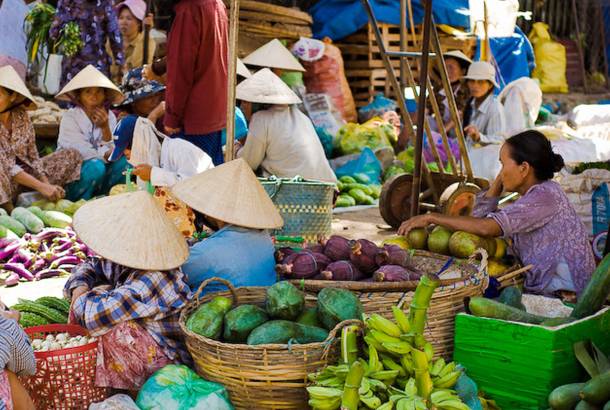
What is good to shop for in Vietnam?
Vietnam is a shoppers delight. Wonderful arts, crafts, jewelery and textiles abound in even the most remote locations and savvy souvenir shoppers can drive a hard bargain. Bustling markets, modern shopping malls and small street stalls sell all manner of things from beautiful handicrafts and war souvenirs, to colorful gem stones and high quality silk and clothing, which can be tailored for a small fee. Some of the most popular souvenirs include the ubiquitous conical hat, lacquer paintings, water puppets and ao dais (the female national costume). For a wide variety of souvenirs, head to Ben Thanh market in Ho Chi Minh City and Dong Xuan market in Hanoi.
How to bargain in Vietnam
Bargaining for goods is part of the Vietnamese culture and it is acceptable in markets and even in some stores. The act of bargaining is seen as entertainment so always approach transactions with a smile and a friendly manner. The amount you can negotiate off varies but you'll get better rates if you bargain in the local currency rather than USD, which is also widely accepted.
Is it safe for a single woman to travel in Vietnam?
Vietnam is a perfectly safe destination for women to travel to on their own though the usual precautions apply - follow the local way of dress and avoid walking down deserted streets late at night. Vietnamese women do not dress particularly conservatively, especially in the cities, but it's advisable to dress with some modesty - leave the mini skirts at home. The Vietnamese are a curious bunch and may be interested to know why you're travelling alone so expect the odd prying question about your marital status and family life.
What is the etiquette in temples in Vietnam?
In order to avoid offense when visiting religious sites, it's important to take particular care and to dress and behave appropriately. Visitors should always wear long trousers, or skirts and shorts that reach below the knee, and shirts with sleeves. It's advisable that women travel with a simple shawl to cover their shoulders if needed. Your feet can get you into all sorts of trouble in Buddhist temples so remember to remove your shoes when entering a temple and do not point at images of Buddha, or any other sacred relics, with your feet. Symbolically the feet are the lowest point and so using them in this manner is considered disrespectful. On the opposite end of this is the head, considered the highest symbolic point, so you should not touch people on the head and you should also remove any headwear when addressing monks.
Photography is generally allowed in temples across Vietnam and 'no photography' signs will be clearly displayed if applicable. When taking pictures of Buddha statues or images, ensure your head stays below that of the Buddha's. Temples are places of worship and therefore it's polite to keep noise to a minimum when walking around the grounds.
Is Vietnam a suitable family holiday destination?
Vietnam is an excellent destination for a family adventure with something for all ages from the thrilling cyclo rides through the narrow streets of Hanoi to the leisurely bike rides among paddy fields around Hoi An. There's plenty of hands-on activities to get involved with whether it's kayaking around Halong Bay or learning to use traditional farming methods in the countryside, which makes Vietnam ideal for active kids and adults alike. In the hot, humid months there's also a number of fun waterparks to play and cool off in.
The Vietnamese love children and show open affection towards them so you'll likely draw attention with your own brood. Don't be surprised if locals approach you and your kids in a playful and inquisitive manner.
Our special Best of Vietnam for Teenagers tour welcomes teenagers aged 12 years and above, accompanied by a parent/guardian. Travelling as a small group of like-minded families (maximum of 24 passengers), friends are to be made and experiences shared. We also welcome children of any age on our private tours and tailor-made holidays to the region.
What is the duty free allowance for Vietnam?
You are permitted to bring the following into Vietnam:
- 200 cigarettes or 100 cigars or 500g of tobacco
- 1.5L of spirits over 22% volume or 2L of fortified wines or liqueurs under 22% volume or 3L of other alcoholic drinks
- 5kg of tea and 3kg of coffee
- Other goods to the value of USD $400
- Perfume and jewelery for personal use
What is the currency in Vietnam?
The official currency in Vietnam is the Vietnamese Dong, which is abbreviated to 'd'.
Euro, British Pounds, US Dollars and other major currencies can be exchanged locally at the airport, bureau de changes or banks. US Dollar notes are widely accepted and shopkeepers use both currencies interchangeably. You can often pay for items in USD and receive your change in USD notes and VND coins. Make sure that your USD bills are crisp and clean and you will have no problem using or exchanging these throughout your stay.
ATM machines can be found in all major cities though it is not common to pay with credit card in restaurants, cafes or shops for purchases. It's advisable to request bank notes in smaller denominations, as it can sometimes be hard to get change from large notes and smaller notes are handy for smaller purchases and gratuities. Traveler's Checks are not recommended as they're often difficult to exchange and incur high fees.
It's illegal to take Vietnamese dong out of the country and it's nearly impossible to change the currency outside of Vietnam so make sure you exchange any leftover notes before you leave. It's easy to convert what you have left in your wallet to USD or other major currencies. Check OANDA for the latest exchange rates.
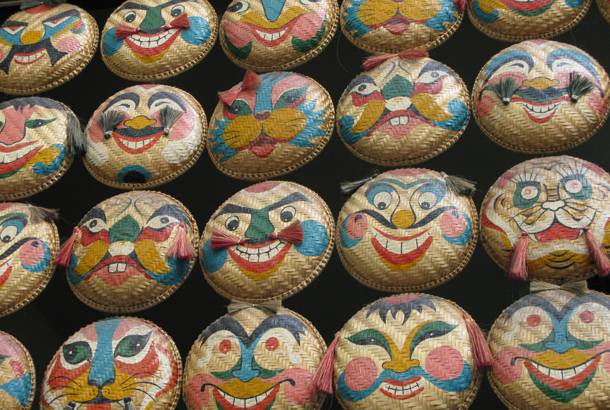
What do things cost in Vietnam?
By international standards, Vietnam represents good value for money in terms of costs of eating, drinking, postage, sundry holiday and souvenir purchases though with the widespread use of USD as a currency, Vietnam can seem a little more pricey than other destinations in Southeast Asia. Accommodation is generally a tad more expensive than you'll find in neighboring Thailand and Laos but food is still a bargain, especially at markets and street stalls. Even in decent restaurants you can safely budget around USD $15 per person per day for lunch and dinner.
When travelling on a group tour, which includes your accommodation, sightseeing, breakfast and transportation, we recommend budgeting between USD $25-40 per person per day to cover additional meals, snacks, drinks, souvenir and odd purchases.
What sort of plugs do I need for Vietnam and what is the voltage?
The standard voltage in Vietnam is 220 volts. Primary sockets generally require 2 flat prong plugs, 2 round pin plugs, and many of the new 4 and 5 star hotels use British standard 3-pin plugs. We recommend that you pack a universal travel adaptor. You will need a voltage converter and plug adaptor in order to use U.S. appliances.
Is WiFi widely available in Vietnam?
Internet access in Vietnam is constantly being developed and it's pretty easy to get online in the major cities and tourist destinations. One exception is Halong Bay where nights are spent sailing offshore and WiFi access here, although often advertised as available, is incredibly slow if it works at all. Free WiFi is usually offered in coffee shops, fast food franchises and hotels in cities and towns, making it possible to get online without too much hassle. In the rural areas WiFi is harder to come by.
What time zone is Vietnam on?
Vietnam is 7 hours ahead of Greenwich Meantime (GMT) and does not observe Daylight Saving.
Travelling during Tet
The most important and widely celebrated public holiday of the year in Vietnam is Tet, the Lunar New Year, which coincides with the cycle of the moon. This public holiday usually takes place in late January or early/mid February and lasts officially for three days, although many businesses are closed the entire week.
We discourage travel over the Tet period (usually one week either side of the holiday). Although the country is vibrant and colorful during this time, trains, buses and flights are often booked out or expensive. Restaurants, shops, tailors and some key tourist sites are closed, and the floating markets of the Mekong do not operate for one week after Tet. If you have to travel during this time then please be aware that services may not match what you would receive at other times of the year.
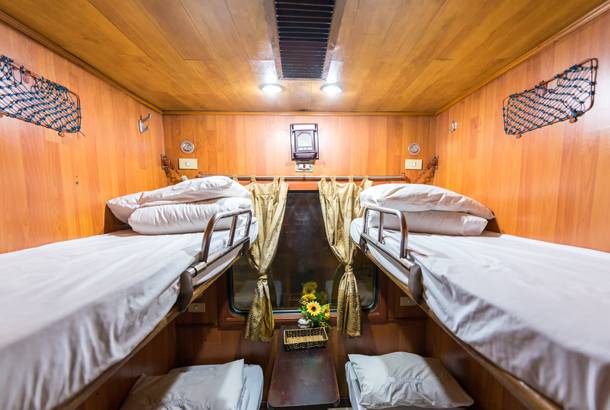
What is train travel in Vietnam like?
Travelling overnight on the Reunification Express is a popular experience in Vietnam - it's a relaxed and comfortable way of getting from A to B without the traffic jams found on the highways. The most popular route for many travelers is the overnight sleeper train from Hanoi to Hue or from Hanoi to Lao Cai for trekking around Sapa. The vast majority of our Vietnam group tours include the former journey.
Although a little aged, trains in Vietnam are comfortable with 4-berth air-conditioned soft sleeper cabins. A clean pillow, bed sheet and duvet are provided for every new passenger with luggage space beneath the bottom bunk and in the large recess above the compartment door. The cabins also have individual reading lights and some of the newer trains also have electrical points for charging phones and tablets. At either one or both ends of the carriage there is a Western-style toilet which is attended to regularly though it's always wise to travel with spare toilet paper just in case. There's also a free water dispenser at the end of the corridor for both boiling and cold water so you don't have to go without your morning cup of tea. Dining cars are available on many of the express train services and food trolleys often ride up and down the carriages offering snacks and drinks.
Did you know? Originally constructed between 1899 and 1936, the 1726km-long Reunification Express connects Hanoi in the north with Ho Chi Minh City in the south. The railway sustained major damage during WWII and later during the Vietnam War - it's still possible to see bomb craters at some bridges and stations. After reunification the railway was reconstructed as a symbol of the country's unity.
Junk Boat Sailing
A Junk is an ancient Chinese sailing vessel still in use today in Southeast Asia. We stay overnight on board a Junk boat on most group tours at Halong Bay in Vietnam. The simply-rigged seagoing vessels were designed by the Chinese boat builders of the Han Dynasty (206 BC–220 AD). The flat-bottomed wooden boats, like the Sampan, have no keel instead they rely upon a large rudder to prevent sideways slip in the water. The interiors, traditionally panelled in soft wood or teak, are equipped with a dining room, lounge, 5–12 fully equipped cabins and a number of bathrooms. Many junks have an alfresco dining area and all have deck space kitted with comfy loungers for sunning, relaxing and taking in the views.
See Also
When planning your trip to Vietnam take a look at our other handy resources:
Best Places to Visit - what to see in Vietnam
Best Time to Visit - climate and weather in Vietnam
Tourist Visas - details on visa requirements for different nationalities
Hanoi or Ho Chi Minh City - compare Vietnam's northern and southern powerhouses
Traveler Reviews - see why our passengers enjoy our Vietnam tours
Popular Touring Destinations - combine the key drawcards of Vietnam in one tour
Hoi An Lantern Festival - all your frequently asked questions answered
Vietnam Video Lounge - stunning travel videos filmed in Vietnam
Trekking in Vietnam - a guide to the top spots, best time to go and more


















